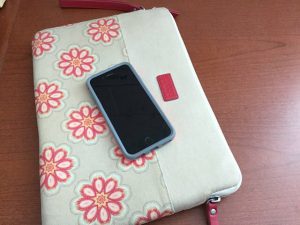
by Suzanne Holloway | Jan 10, 2025
January is recognized as National Blood Donor Month, but what makes blood and blood donation so important?
What is blood?
Blood is an essential bodily fluid that constantly flows through your body keeping it working. It has four main components: red blood cells, white blood cells, plasma, and platelets. Each part is designed to specific tasks.

This Photo by Unknown Author is licensed under CC BY-ND
Plasma
The majority of blood—approximately 55%—is composed of plasma. It is yellowish fluid that is a mixture of water, sugar, fats, proteins, and salts. Its main task is to transport blood cells throughout the body, but is also moves products like nutrients, proteins, hormones, and waste.
Red Blood Cells
The second largest component in blood is red blood cells (RBCs), or erythrocytes, making up about 40 – 45 percent of its total volume. These cells contain a protein called hemoglobin, which helps carry oxygen from the lungs to the rest of the body. Hemoglobin also gives RBCs, and the rest of the blood, their distinct red color.
White Blood Cells
White blood cells, or leukocytes, make up a much smaller portion than red blood cells about 1% of the blood. Their role is to protect the body from infections.
Platelets
Unlike red and white blood cells, platelets are not actually cells, but rather fragments of cells. They are the small component within blood being less than 1% of the total volume of blood. Platelets manage bleeding by assisting in the blood clotting process (coagulation) to seal damaged blood vessels to prevent a large amount of blood loss.
What are the blood types?
Blood also contains antigens, and a protein called the Rh factor, which serve as markers that determine a person’s blood type. Based on antigens alone, there are four main blood types: A, B, AB, and O. However, the Rh factor further classifies blood as either positive (+) or negative (-), resulting in a total of eight common blood types: A positive (A+), A negative (A-), B positive (B+), B negative (B-), AB positive (AB+), AB negative (AB-), O positive (O+), and O negative (O-). The most common blood type, in the United States, is O positive (O+); the least common, in the United States, is AB negative (AB-).
| Blood Type |
Approximate U.S. Population Percentage |
| A positive |
33% |
| A negative |
6% |
| B positive |
9% |
| B negative |
< 2% |
| AB positive |
< 4% |
| AB negative |
< 1% |
| O positive |
38% |
| O negative |
7% |
Understanding blood types enables healthcare providers to safely perform blood transfusions and organ transplants by ensuring compatibility between the donor and the recipient. Additionally, those with AB positive (AB+) blood are known as universal recipients; those with O negative (O-) blood are universal donors.
What’s the importance of blood donors?
According to the American Red Cross, someone in the United States needs blood and/or platelets every two seconds. That is about 29,000 units of red blood cells, 5,000 units of platelets, and 6,500 units of plasma needed daily. Nonetheless, there is no substitute or manufactured version for blood, which means it has to be generously donated by volunteers. It is important for surgeries, cancer treatment, childbirth, chronic illnesses (e.g., sickle cell disease), and traumatic injuries (e.g., car accidents). For more information on the donation process and how to prepare for a donation check out this website from the U.S. Department of Health and Human Services (HHS).
To the almost 7 million people in the United States who donate their time and blood, thank you. Your single donation has saved multiple lives, and your generosity is worth celebrating.
Sources
American Society of Hematology
Cleveland Clinic
American Red Cross

by Laurie Osgood | Apr 28, 2022
National Fair Housing Month supports affordable housing by helping make affordable housing a reality for many working families, representing many backgrounds, races, and colors. The Fair Housing Act was enacted into law in 1968 to protect Americans from discrimination when selling or buying houses, including rental properties and mortgage financing, based on color, race, and even gender. According to the Fair Housing Amendments Act, it is illegal to discriminate against any person because of race, color, religion, sex, handicap, familial status, or national origin.
The Fair Housing Act protects consumers from following unlawful, discriminatory housing practices in:

The Fair Housing Act protects buyers and renters from discriminatory housing practices. Photo Credit: Pam Tribue, UF/IFAS Extension Gadsden County.
- the rental or sale of housing properties, including residential lots
- the establishment of real estate brokerage services
- the marketing or advertisement of properties for sale or rent
- the appraisal process of housing properties
- the housing finance process
Marcia L. Fudge, Secretary, Department of Housing and Urban Development (HUD), states that “Fair Housing Month is a time to recommit to our nation’s obligation to ensure that everyone has equal access to safe, affordable housing. Unfortunately, housing discrimination still exists, from individuals and families being denied a place to call home because of the color of their skin or where they come from, to landlords refusing to allow persons with disabilities to keep assistance animals, to individuals being denied a place to live because of who they love.”
Are you a victim of unlawful housing discrimination?
Anyone who believes they have suffered unfair housing practices or discrimination can file a complaint with HUD’s Office of Fair Housing and Equal Opportunity at (800) 669-9777. You can also report housing discrimination online by using the following link: https://www.hud.gov/program_offices/fair_housing_equal_opp/online-complaint#_How_to_File
To learn more about Fair Housing, contact UF/IFAS Extension Gadsden County at (850) 875-7255.
Source:
HUD Commemorates National Fair Housing Month 2022 | HUD.gov / U.S. Department of Housing and Urban Development (HUD)

by Melanie Taylor | Nov 24, 2020
2020 has been a year of many changes and challenges due to the Coronavirus pandemic, which unfortunately will continue into our holiday season. To protect our friends, family and community members we must continue following the science-based guidelines provided by the Centers for Disease Control and Prevention (CDC) and your state and local guidelines to prevent exposure and the spread of the virus.
Unfortunately, the Covid-19 epidemic numbers are rising again. Gatherings of any kind, both small and large, are contributing to the rise in positive cases. We can all make choices based on the scientific research that can protect us and others by making small changes in our 2020 holiday celebrations. Limiting the risk and being diligent in our actions should be our main goal until a vaccine is approved and dispersed throughout the country.

Holiday Dinner
Photo Source: UF/IFAS
Some unique and easy ways to celebrate the holidays this year are to “gather virtually” with those not in your immediate household or to gather in-person only with members of your own household. These two types of gatherings offer the lowest risk for spreading the virus. Your household is anyone who currently lives and shares common spaces in your home. People who do not currently live in your home, such as college students who are returning home from school for the holidays, should be considered part of different households. In-person gatherings that bring together family members or friends from different households, including those college students returning home, offer varying levels of risk. The level of risk is difficult to determine because people may have been exposed and/or are a carrier and may not be aware of it.
Here are some specific things to consider when deciding how to celebrate your holidays.
- Number of cases in your community – Be sure to know the number of positive Covid cases in your community. If the numbers are rising or are already high you should take precautions based on the data. You can check your specific county or city Covid rates at your local health departments website.
- Exposure during travel – Airports, bus stations, train stations, public transport, gas stations, rest stops and hotels are all places travelers can be exposed to the virus in the air and on surfaces. Be aware if you will be traveling or if you have guests traveling to your home.
- Location of your gathering – Indoor gatherings, especially those with poor ventilation, expose your family to more risk than outdoor gatherings.
- How long will your gathering last? – Time is an important factor to consider. The longer the gathering lasts the more risk those attendees will have of being exposed. Being within 6 feet of someone who has Covid for a cumulative total of 15 minutes or more greatly increases the risk of becoming sick and requires a 14-day quarantine.
- Number and crowding of people at the gathering – Gatherings with more people bring more risk than gatherings with fewer people. The size of a holiday gathering should be determined based on the ability of attendees from different households to stay 6 feet (2 arm lengths) apart, wear masks, wash hands and follow state, local, territorial, or tribal health and safety laws, rules and regulations.
- Behaviors of attendees before the gathering – People who do not consistently follow social distancing, wearing masks, regular handwashing and other prevention behaviors cause more risk than those who consistently practice the recommended safety measures.
- Behaviors of attendees during the gathering – Gatherings with more safety measures in place, such as mask wearing, social distancing and handwashing, offer less risk than gatherings where fewer or no preventive measures are being implemented. Use of alcohol or drugs may alter judgment and may make it more difficult to practice Covid safety measures.

Be sure your technology is charged and ready for your virtual holiday visit. Photo Source: Kendra Zamojski
Other high-risk holiday related activities to avoid to help prevent the spread of the virus:
- Going shopping in crowded stores.
- Participating or being a spectator at a crowded parade, race or other holiday celebration.
- Attending large indoor gatherings with people from outside of your household.
- Using alcohol or drugs that may alter judgment and make it more difficult to practice Covid safety measures.
Things to consider before your gatherings:
To make the holiday less stressful be sure to practice a virtual session before the virtual holiday gathering. Make sure everyone involved knows how to connect to the virtual holiday celebration so the gathering will go more smoothly and hopefully experience less technical problems on that day.
We all had to adapt to many unexpected changes this year and the holidays will be no different. Just remember being diligent now will protect family and friends and help control the spread of the virus in our communities. Be sure to enjoy your unique holiday season this year, but here’s hoping for a less challenging 2021.
Stay safe! Enjoy your family and friends from a safe distance! Happy Holidays!
Source:
CDC: https://www.cdc.gov/coronavirus/2019-ncov/daily-life-coping/holidays.html

by Angela Hinkle | Oct 27, 2020
The year 2020 has certainly been one filled with challenges. But unlike the challenges of sickness, social distancing, economic hardships, and hurricanes, the 2020 Peanut Butter Challenge offers helpful, feel-good relief.

Nutty for Peanut Butter
Photo Source: Angela Hinkle
Throughout Florida, the 2020 Peanut Butter Challenge assists families who could really use some help.
Why
Peanut butter is one of the most requested foods for food pantries and food distribution sites. It’s food-safe at room temperature. You don’t need electricity to keep it hot or cold. People like the taste (although creamy texture is usually preferred over crunchy). Peanut butter can be eaten by itself or spread on crackers or bread or mixed into a smoothie or used to make a satay to go with noodles or chicken. It’s a quick and easy protein source. Peanut butter provides other nutrients our bodies need, like fiber and iron. And, economically speaking, peanut butter easily fits into a modest grocery budget.
When
The 2020 Peanut Butter Challenge runs until the day before Thanksgiving – this year, November 25th. You still have plenty of time, although why delay such a great opportunity? Of course, peanut butter makes a great gift to food pantry and distribution sites all year long.
How

Peanut Butter Challenge Champion
Photo Source: Angela Hinkle
UF/IFAS Extension Offices throughout the Florida Panhandle are collection sites for unopened jars of peanut butter. Bring as many jars as you would like. An agent in your local Extension Office can also direct you to a variety of other peanut butter donation sites. Next time you shop, look for a Buy-one Get-one offer. Donate one and keep one for yourself. Or just pick up a couple extra jars, knowing you may really be helping a family in need.
Who Benefits
Once all the jars of peanut butter are collected, they are then redistributed to local food pantry and distribution sites. Families in need going to those sites benefit with an easy, tasty, quick, healthy way to provide for those in their care. You feel satisfied knowing you found a great way to help a neighbor.
So this year, give the gift of a few jars of peanut butter and conquer the 2020 Peanut Butter Challenge.

by Melanie Taylor | Mar 12, 2020

Speak openly with your doctor about any concerns you may have regarding your health. (Photo source: Tyler Jones, UF/IFAS)
We are in the depths of flu season and now the Coronavirus (COVID-19). Although we need to proceed with caution, we also want to avoid causing a panic. Both viruses are very concerning, but with good hand washing skills and a few other daily steps you can do your best to prevent you and your family from becoming sick.
Hand washing is one of the best ways to protect yourself and your family from getting sick. You can help yourself and your loved ones stay healthy by washing your hands often, especially during these key times when you are likely to get and spread germs:
- Before, during and after preparing food
- Before eating food
- Before and after caring for someone at home who is sick with vomiting or diarrhea
- Before and after treating a cut or wound
- After using the toilet
- After changing diapers or cleaning up a child who has used the toilet
- After blowing your nose, coughing or sneezing
- After touching an animal, animal feed or animal waste
- After handling pet food or pet treats
- After touching garbage
Follow these Five Steps Every Time You Wash Your Hands:
- Wet your hands with clean, running water (warm or cold) and apply soap.
- Lather your hands by rubbing them together with the soap. Lather the backs of your hands, between your fingers and under your nails.
- Scrub your hands for at least 20 seconds. Need a timer? Hum the “Happy Birthday” song from beginning to end twice.
- Rinse your hands well under clean, running water.
- Dry your hands using a clean towel or air dry them.
Use Hand Sanitizer When You Can’t Use Soap and Water
You can use an alcohol-based hand sanitizer that contains at least 60% alcohol if soap and water are not available. Washing hands with soap and water is the best way to get rid of germs in most situations. If soap and water are not readily available, you can use an alcohol-based hand sanitizer that contains at least 60% alcohol. You can tell if the sanitizer contains at least 60% alcohol by looking at the product label.
- Sanitizers can quickly reduce the number of germs on hands in many situations.
- Sanitizers do not get rid of all types of germs.
- Hand sanitizers may not be as effective when hands are visibly dirty or greasy.
- Hand sanitizers might not remove harmful chemicals from hands like pesticides and heavy metals.
How to Properly Use Hand Sanitizer:
- Apply the gel product to the palm of one hand (read the label to learn the correct amount).
- Rub your hands together.
- Rub the gel over all the surfaces of your hands and fingers until your hands are dry. This should take around 20 seconds.
Caution! Swallowing alcohol-based hand sanitizers can cause alcohol poisoning if more than a couple of mouthfuls are swallowed. Keep it out of reach of young children and supervise their use.
Conclusion – Other Basic Tips to Prevent Spread of Illness:
- Wash your hands often with soap and water for at least 20 seconds. If soap and water are not available, use an alcohol-based hand sanitizer.
- Avoid touching your eyes, nose and mouth with unwashed hands.
- Avoid close contact with people who are sick.
- Stay home when you are sick.
- Cover your cough or sneeze with a tissue, then throw the tissue in the trash.
- Clean and disinfect frequently touched objects and surfaces.
Be sure to utilize credible sources to find your information. The Centers for Disease Control and Prevention (CDC) and the Florida Department of Health are excellent resources.
CDC page Preventing COVID-19 Spread in Communities https://www.cdc.gov/coronavirus/2019-ncov/community/index.html
CDC frequently asked questions (FAQs) https://www.cdc.gov/coronavirus/2019-ncov/downloads/2019-ncov-factsheet.pdf
Florida Department of Health frequently asked questions (FAQ) http://www.floridahealth.gov/diseases-and-conditions/COVID-19/faq.html
If you have further questions or concerns, please contact your local Department of Health for assistance.
Sources:
Center for Disease Control and Prevention – https://www.cdc.gov/
Florida Department of Health – http://www.floridahealth.gov/

by Stephanie Herzog | Oct 11, 2019
Have you ever been bullied or know someone who has been bullied? I know I have. October is National Bullying Prevention Month. Each October since 2006, there has been a national effort to raise awareness about bullying and provide education and resources to try to prevent it. According to data from 2017, about 20% of youth ages 12-18 experienced bullying at school and nearly 30% reported cyberbullying during their lifetime. That is a lot of our country’s youth!
What Exactly is Bullying?
Bullying is unwanted aggressive behavior. Bullying must have a real or perceived power imbalance between the bully and the victim, where the bully uses their power to control or hurt their victim. The bullying behavior needs to be repeated over time, or at least have the potential to repeat over time.
There are three categories of bullying:
- Verbal bullying includes teasing, taunting, threats, or name-calling
- Social or relational bullying includes ignoring someone on purpose, ostracizing, spreading rumors, or embarrassing someone
- Physical bullying includes damaging belongings or harming another’s body such as spitting, hitting, pushing, rude gestures, or tripping

The constant and easy access of cell phones, social media, and the internet has increased the real dangers of cyberbullying. (Photo source: UF/IFAS)
Cyberbullying
Technology has changed the ways of bullying. Bullying is no longer only ‘picking on’ someone, making fun of them, calling them names, or ignoring them at school. The constant and easy access of cell phones, social media, and the internet has truly expanded bullying to an unthinkable, unending scale. There are many ways to bully someone online, including:
- Verbal attacks, mean messages, or rumors on social media accounts, online games such as Fortnite, or through email or text
- Releasing embarrassing or inappropriate pictures, GIFs, or videos online or through text (e.g. sexting)
- Creating fake profiles or hacking into someone’s account online in order to hurt that person
Perhaps one of the most dangerous things about cyberbullying is once something is posted online and is circulated, it’s very hard to permanently remove. This oftentimes makes escape from the bullying unusually difficult or even seemingly impossible. It’s so important to keep up with ways technology is advancing in order to protect ourselves from things like cyberbullying.
Effects of Bullying
The negative psychological effects of bullying are very real – for the bully, the victim, and those who may witness it.
For the bully, they have a greater risk of using substances, engaging in risky or violent behavior, being abusive in future relationships, committing crimes, and developing other external behavior problems.
Effects of bullying include low self-esteem, fear, loneliness, heartache, and potential physical illness. These effects put a widespread toll on the mental, physical, and social health of the victims and also those who witness bullying. The increased risk of using addictive and illegal substances, anxiety, depression, eating disorders or even becoming suicidal are to be taken seriously and should be treated appropriately. Seek out mental health professionals or physicians and consult with them on the best combination of treatment. These effects can last days, months, years, or even lifetimes depending on the person and the circumstance.
The Story of Amanda Todd
The story of Amanda Todd is an unfortunate real example of cyberbullying and how unforgiving and never-ending it can be. Amanda ultimately committed suicide to get away from it; she was only 15 years old. Her YouTube video, published in 2012 a month before she committed suicide, has 13.5 million views to date. To better understand the reality of bullying, please consider watching it or sharing it. However, viewer discretion is advised.
Bullying, harassment, discrimination, or any other type of negative, cruel, or harmful behavior is never okay or acceptable in any way. If you have been a witness of bullying or a bully, stand up to stop it! If you have been bullied or know someone who has, please seek help from caring professionals, family, or friends. Go-to resources are found below.
Additional Resources
Stop Bullying Now Hotline: 1-800-273-8255
- Available 24/7, managed by the U.S. Department of Health and Human Services
National Suicide Prevention Lifeline: 1-800-273-8255
- Available 24/7, there is an online chat option available here
The Trevor Project: 1-866-488-7386
- Available 24/7, suicide prevention help specifically for the LGBTQ+ community
- Texting and chat options are available here
National Eating Disorders Association: 1-800-931-2237
- Mon-Thu 9am-9pm, Fri 9am-5pm
The Cybersmile Foundation
STOMP Out Bullying
Stopbullying.gov
Sources
National Center for Educational Statistics, Indicators of School Crime and Safety Indicator 10: Bullying at School and Electronic Bullying, April 2019.
Cyberbullying Research Center
The Amanda Todd Legacy














